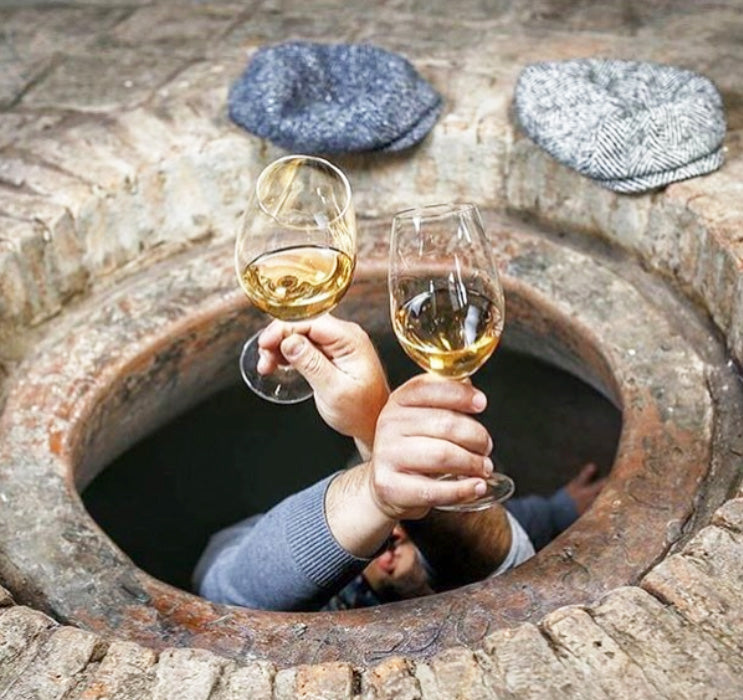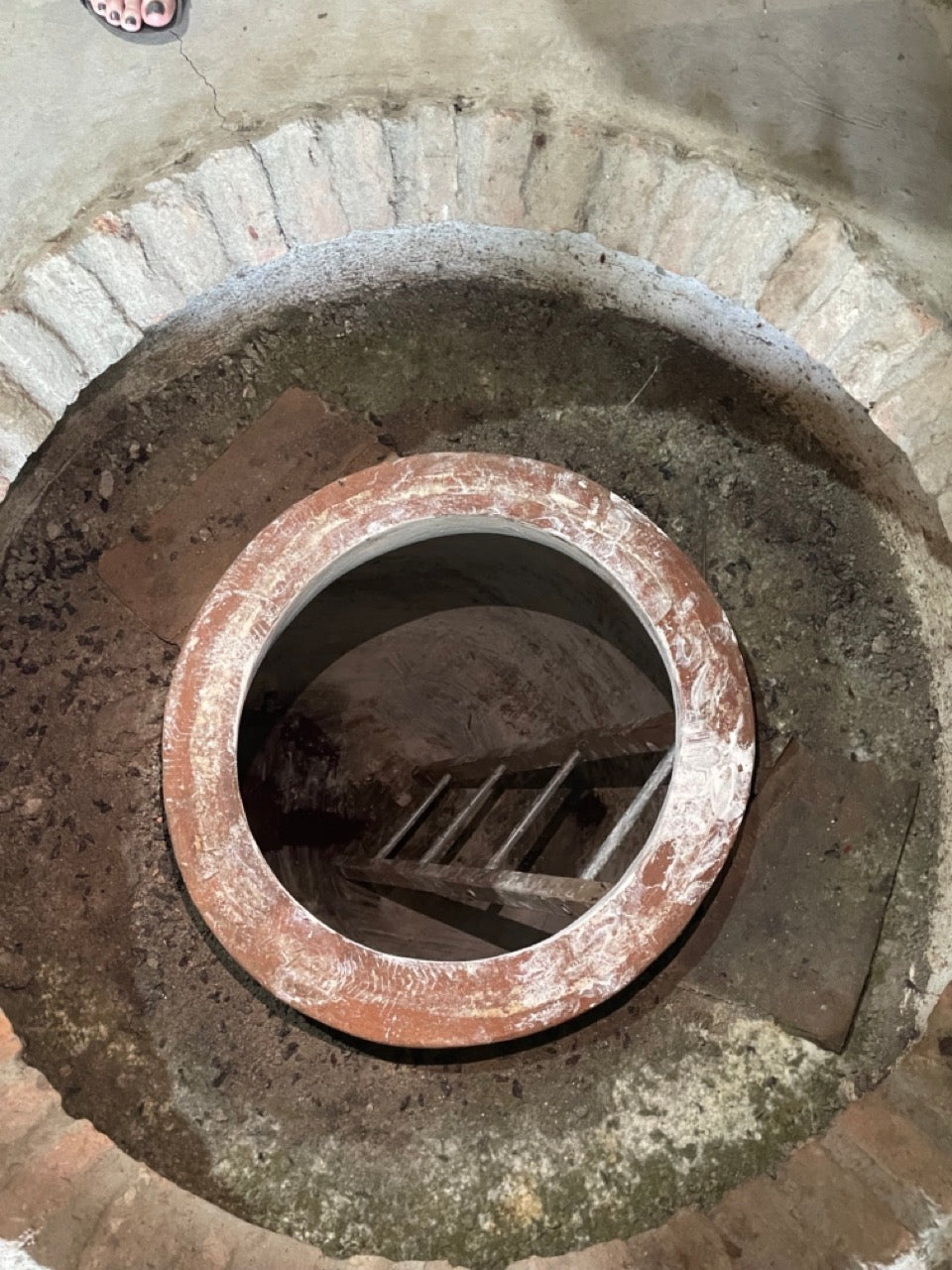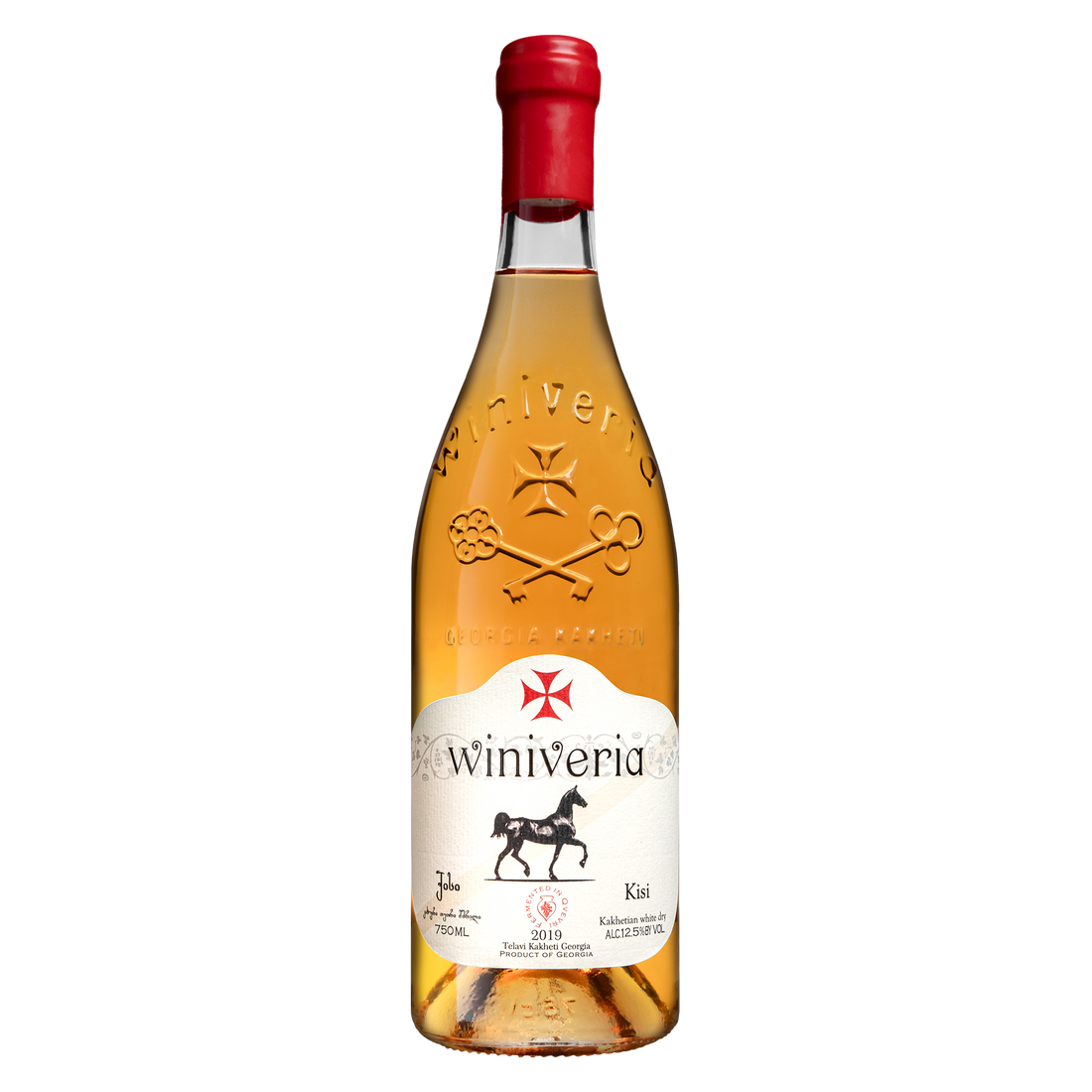Also sometimes called orange wines or skin-contact whites, in Georgia, these beauties go by "amber" wines.
We think “amber” best describes their warm, golden-into-auburn color palette and the intriguing, savory-leaning, softly spiced flavors they often boast.
Many drinkers’ first experience with Georgian wine is in the form of amber wine… which is often a whole new perspective — especially if you’re used to only whites or reds! Do you know how amber wines are made, or what gives them their signature color or distinctive flavors?
What do amber wines taste like?
Oh! Incredible: Exotic, structured, piquant, characterful. Concentrated with sundried, golden fruit, warm woodsy tones and an undercurrent of gentle spice. Enchanting, ineffable and deeply familiar all at once.
Amber wines made from native Georgian grape varieties like Kisi, Rkatsiteli or Mtsvane are softly perfumed and richly layered, with gently gripping tannins.
Because of their skin contact, amber wines contain a higher percentage of antioxidants and polyphenols, both of which are beneficial to health.
-

Flavor profile
Shop Amber WinesMake no mistake: These are nothing like your ordinary white wine. In fact, amber wines’ savory flavors and richer mouthfeel can feel more akin to red wines, or even dark spirits. Think: dried apricot, mango, pineapple and golden raisin intermingling with savory and spiced turmeric, toasted walnut, chamomile, terra cotta and coriander and more...
-

How to enjoy
Georgian HospitalityIf you’re new to ambers, it’s a whole new world, ready for enjoyment with new moods, foods and occasions! Enjoy them at a cool (not cold!) cellar temperature — around 55-60 degrees if we’re being specific, so their unique aromatics and structure can shine — with soulful food and nourishing company.
-

Pairing Suggestions
Browse Recipe PairingsWe love a traditional Georgian stew or heady grilled meats, roasted vegetables or smoked fish, but amber wines can also pair incredibly well with hard cheeses and nuts, Asian cuisines, Latin American flavors, or African spiced dishes. Match the bold intensity of the wine with the food, and ensure the food has a little fat for the wine’s tannins to play off of.


Where are amber wines made?
While amber wines have gained in popularity in recent years, with winemakers all around the world experimenting with this style of production, in Georgia, wines have been made this way for millennia. Indeed, Georgia is considered the birthplace of intentional winemaking, dating back 8,000 years!
Today, the Kakheti region of Georgia is most closely associated with amber wines. Think of Georgian ambers as the OGs — the “original oranges.” This style was typical in Georgia because, historically, ancient winemakers didn’t have the tools, technology or advanced understanding of fermentation science to separate grape skins from juice prior to fermentation. Instead, they simply tossed entire clusters of just-picked grapes into their qvevri… and then let God/the universe/magic do its trick, eventually turning out a tantalizing (and intoxicating!) golden liquid.


Are amber wines made in qvevri or amphora?
Not always! Amber wines are simply the result of clear (white) grape juice sitting in contact with white grape skins for an extended period of time. In Georgia, that’s often 6-12 months, and often in traditional qvevri—those large, buried clay vessels. But amber wines can also be made in stainless steel tanks, or oak barrels, or any other fermentation vessel, as long as the juice and skins are soaking together.
Amber winemaking in qvevri is unique because the vessel’s shape allows the fermenting wine to naturally circulate, further drawing out texture, flavor and character without any additives or preservatives. When fermentation finishes, the spent yeast, grape skins, seeds and stems naturally settle to the bottom of the qvevri, often precluding the need for any filtration or fining.









